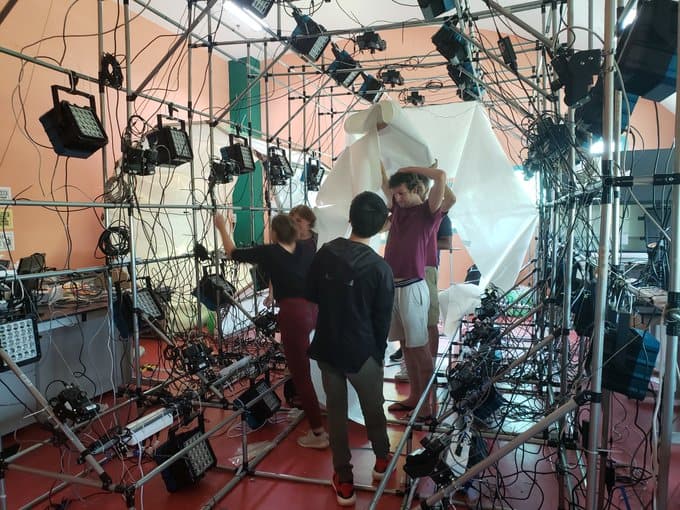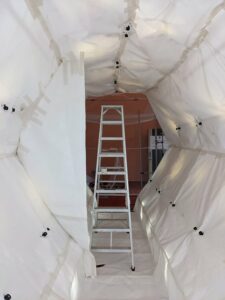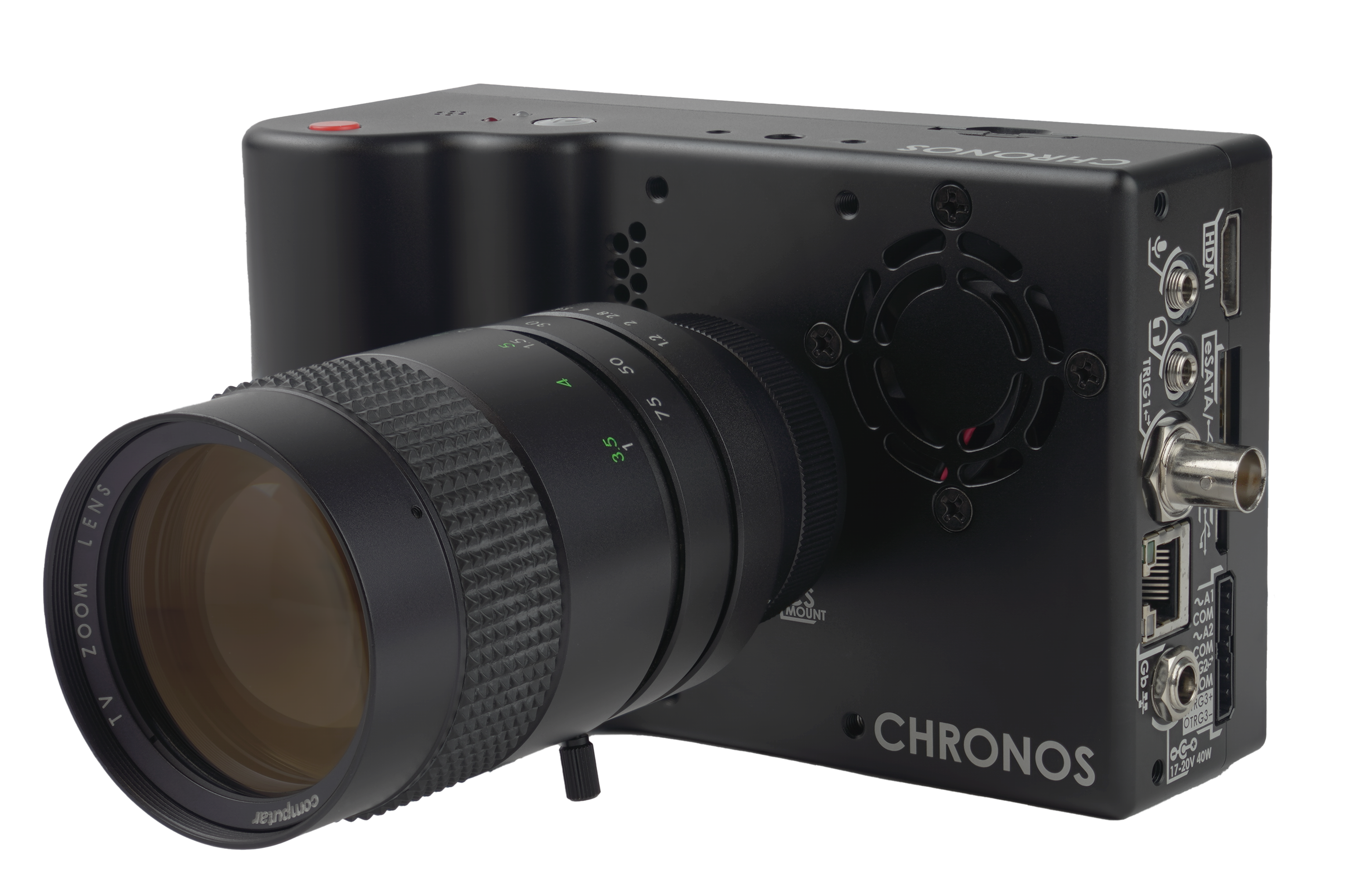Kron Technologies Streamlines Sales with Katana and WooCommerce
Kron Technologies is the manufacturer of high-speed cameras and uses seamless Katana and WooCommerce integration to streamline…
Detailed data capture of bat aerodynamics
Synchronization of 50 cameras in an array AI implementation of flight emulation
Successful mapping of bat flight path
Nature has spent 3.8 billion years refining form, function, and process. With scientific rigor and creativity, we can use nature to solve almost any problem – from the nanoscale to the global. We call this bioinspiration. Bioinspiration involves
taking principles from biological systems and applying them to technological and design problems. As global challenges become more complex, researchers and scientists are increasingly drawing inspiration from biological systems to find new solutions.

"Compared to fixed-wing, flapping-wing robots have decreased mechanical complexity and reduced system mass. In other words, they are optimised for building smaller quieter drones in the future."
Fixed-wing drones are popular for filming and photography, but bio-inspired robots with flapping wings are the future.
Researchers who study how bats fly are applying the data towards developing next-gen flying robots. Compared to fixed-wing, flapping-wing robots have decreased mechanical complexity and reduced system mass. In other words, they are optimised for building smaller quieter drones in the future. In nature, many animal species can both fly and glide. Bats are unique because they are the only mammal capable of performing a true and sustained flight. Bats are more skilled than most birds and can use their flying capabilities to prey, escape predators, and for migration.
Interestingly, bat wings are highly adapted forelimbs covered with skin membranes, much different than a birds feathered wings.
Virginia Tech Professor, Dr. Rolf Mueller, started a journey to record the movements of bats in the country of Brunei in 2019. Now, having overcome multiple delays caused by the COVID-19 pandemic, he has built a motion capture tunnel for both live bats, and robots that replicate their flight.
With an array of 50 high-speed Chronos cameras and ultrasonic microphones, the tunnel captures the motion and biosonar pulses of the bats as they pass through the tunnel, feeding this information to data banks for later analysis.
 By observing and recording their flight patterns, the researchers are able to form a more complete picture of what bat flight looks like, including detailed wing movement and how sound and motion come together to enable their deft aerial maneuvers.
By observing and recording their flight patterns, the researchers are able to form a more complete picture of what bat flight looks like, including detailed wing movement and how sound and motion come together to enable their deft aerial maneuvers.
After significant setup work, Professor Mueller's team finished constructing the tunnel in the small equatorial country of Brunei, capitalizing on the country's diverse and abundant bat population.
On Dr. Mueller's team, senior Ph.D student Yihao Hu, designed a new way of modelling and imitating bat flight using deep learning and a camera array to track the bats flight in a three-dimensional space. Each camera required high-resolution and high frame-rates to capture the fast flight of the bats and details of rapidly moving wings.
The videos are then fed to a ground-breaking AI technology called Graph Convolutional Neural Network (GCNN) which learns to imitate and optimise the
motion of any 3-dimensional object in a similar way to how the human brain learns to move and perform actions.
The immense representational capacity of deep learning pushes the design space much closer to truly unconstrained biomimicry, compared to traditional methods, which involve the limited precision of expertly-designed mechanical models. However, the tradeoff for unprecedented performance is the unprecedented amount of data captured from the 50 Chronos cameras that was required to train the AI model.

The Chronos 1.4 camera system offered the best value for Mueller's team due to its balance of cost and high performance when compared to its competitors. A frame-rate of more than 200 frames per second (FPS) is required in order to capture the small details of bat wing motion during flight. With 1069FPS and 1024*1280 resolution, Chronos empowered the team to track subtle movement and change in wing shape at an unprecedented level of detail.
Dr. Mueller tested some other high-speed camera manufacturers products and found that either the performance couldn't reach the requirements or the cost was negligible within their budget. Dr. Mueller determined he needed 50 cameras and began constructing the tunnel to mount the cameras and begin the project.
Dr. Mueller emphasized that most high-speed cameras optimized for high FPS are out of reach for Universities due to cost and availability. Chronos provided an affordable solution that didn’t compromise on framerate and resolution. After several weeks of comparing different products, the choice was clear, Dr. Mueller decided on the Chronos 1.4 camera system to capture his research and he’s been very pleased with the results.
For research projects with a multiple-camera array, synchronization is essential for controlling the timing of recording. Typically, a single trigger switch cable is used to control the start and stop of multiple cameras simultaneously.
Chronos cameras include a 5-inch capacitive touchscreen display with a custom GUI. This allows users to easily focus, set exposure, set record timing, and initiate playback with a wide range of intuitive settings. Users can also control the cameras via an included API for PC, and save the videos to an external PC or hard drive for the fast, robust storing of data and an efficient workflow.
Chronos cameras operate on open-source software which allows users to modify and edit source code according to their needs, building customized software, such as a webpage to centralize the control of multiple cameras. Chronos cameras offer scalable flexibility and evolve beyond the typical camera in terms of accessibility and customization.
Kron Technologies’ Technical Support team provided ongoing and timely assistance to Dr. Mueller’s project, recommending lenses, settings, and synchronisation techniques. Working closely with Kron, Dr. Mueller and his team at Virginia Tech were able to capture the necessary data to complete their research and present their findings.
Dr. Rolf Mueller, Professor of Mechanical Engineering, Virginia Tech
Director, Bioinspired Science and Technology Center
[ Bio Link ]


Kron Technologies is the manufacturer of high-speed cameras and uses seamless Katana and WooCommerce integration to streamline…
Case Highlights: Customer: University of Saskatchewan Use Case: Research & Development Needs: Observe plasma spokes Challenge: Observing…